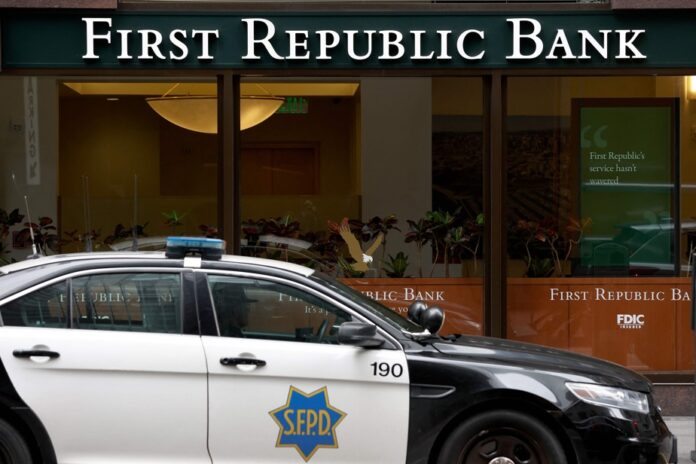(New York) First Republic was in the spotlight on Wall Street on Thursday, its stock jumping after reports suggested that major US banks were ready to come to its rescue to prevent it from becoming the next institution to fail.
The day got off to a bad start for the bank, with its stock falling as much as 36% after a Bloomberg report claimed that First Republic was exploring “strategic options” for its future, including a possible sale. He had already lost 21% the day before and 73% since March 8.
But the stock has started to recover following reports from the Wall Street Journal that JPMorgan Chase, Morgan Stanley and other major banks are trying to come to the aid of First Republic and are discussing various alternatives, including a raise in capital.
And it went back into the green when CNBC reported that banks were ready to put $20 billion on the table.
Contacted by AFP, the bank declined to comment.
First Republic, founded in 1985 and headquartered in San Francisco, is the 14th largest U.S. bank by asset size.
It provides retail and corporate private banking and wealth management services, with offices primarily in California, but also on the East Coast (New York, Massachusetts, Connecticut, Florida), Oregon, Washington and Wyoming.
In short, it has “an affluent clientele concentrated in coastal urban areas,” described Morningstar analyst Eric Compton in a note.
Led until mid-2021 solely by its founder Jim Herbert – who handed over his place as CEO to Mike Roffler while retaining the position of Chairman of the Board – it has recorded “remarkably high organic growth year after year,” notes Eric Compton: it has grown from $22 billion in assets at the end of 2010 to $212 billion at the end of 2022.
But the profile of its clientele has recently become a weakness after the close failures of Silicon Valley Bank, Signature Bank and Silvergate, banks which had bet on particular sectors of activity, the world of tech for SVB or that of cryptocurrencies for Signature Bank and Silvergate.
According to the agency S
Even though the customers come from diverse economic sectors, some fear that many of them prefer to move their money to bigger banks that pose no risk of default because they are too big for regulators to let them close.
Already closely watched for a few days, the bank had indicated on Sunday that it had “strengthened and diversified its liquidity” and had 70 billion dollars thanks to the facilities offered by the American central bank and to JPMorgan Chase.
Insufficient in the eyes of rating agencies S
“We believe the risk of deposit flight is high at First Republic Bank despite the actions taken by banking regulators and the fact that the bank is actively increasing its borrowing capacity to mitigate the risk associated with last week’s bank failures” , justifies S















